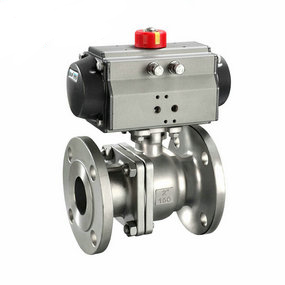Animation of pneumatic ball valve principle of flowmeter Analysis of Shock Absorption Principle of High Speed Punch
Analysis on noise management of stamping machine tools:
① Vibration source control
② Attenuation during transmission
③ Protection of vibrating objects.
Considering the better effect and lower cost of dealing with vibration sources under most conditions, the first two measures are recommended!
At present, there are many data on vibration reduction, such as rubber products, steel springs, latex sponges, air springs, corks, etc. Put the vibration reduction data under the equipment foundation, which can play a good anti vibration effect. Air spring shock absorber and viscous damping steel spring shock absorber have better effect.
The traditional method is to dig a trench with a certain width and depth around the high-speed punch. The effect of the anti vibration trench mainly depends on the ratio of the trench depth H to the wavelength of the vibration surface wave. The purpose of vibration reduction can be effectively achieved through the anti vibration ditch. However, it should be noted that the anti vibration ditch has good isolation effect on high-frequency vibration, but not obvious effect on low-frequency vibration. In addition, when a lot of oil, water and sundries accumulate in the anti vibration ditch, the anti vibration effect will be lost.
Comparatively speaking, it is much easier to take corresponding anti vibration measures for the punch. The vibration isolation measures are mainly aimed at the low-frequency vibration of the punch. The low-frequency vibration has the characteristics of long wave length, long wave length, slow attenuation, and long transmission. An Lijing proposes to choose air spring shock absorber, with a very long vibration attenuation interval, which is suitable for various low-frequency vibration isolation; The device is convenient and the effect is obvious.

5. Check the contact resistance between the electrode and the liquid and the electrode insulation inspection flow chart, item 5. The contact resistance between electrode and liquid mainly depends on the contact area and liquid conductivity. When measuring the distilled water with the conductivity of 5 × 10-6S/cm, the resistance value of the electrode with general structure is 350kD, the domestic and industrial water with the conductivity of 150 × 10-6S/cm is about 15kn, and the brine with the conductivity of 1 × 10-2S/cm is about 200n.




